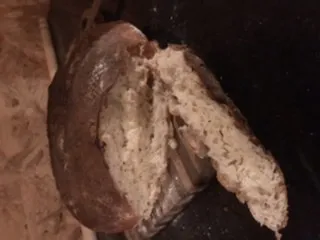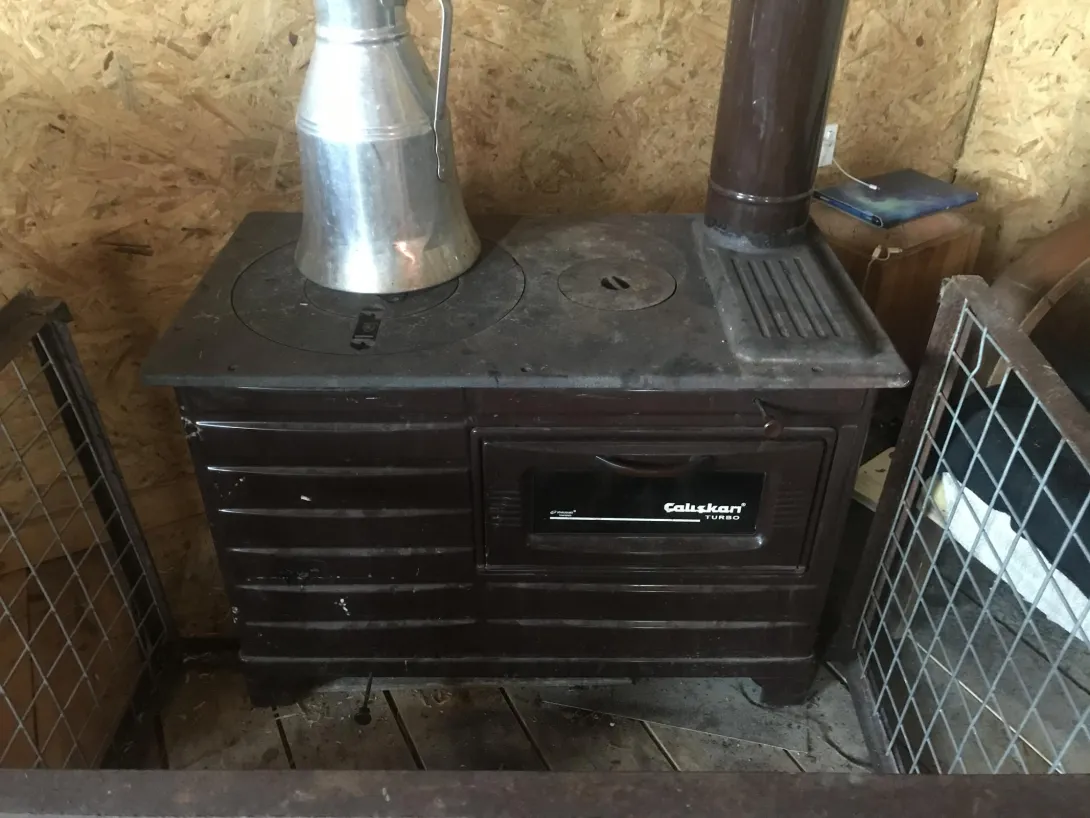
Hello,
Please see picture if it has loaded properly.
I made a basic white bread recipe and the instructions told me to kind of keep the salt and yeast separate as I was mixing as this can make the yeast not work. I tried but think my result was a bit flat.
Even though I had a burnt crust and it was slightly flat it actually tasted amazing and is the only loaf I have ever made that wasn’t a doughy brick. So I was super pleased with myself.
I am attempting the recipe again today.
Could I put the salt in at step 3 after the dough has risen and when you knead it?
Any help appreciated.
Hi SMQ! Your image is too small to see any real detail. Next time you upload an image look for the popup box that says “width” and put 625 in for a very large image. Try it and see how it works. You can enter any width you desire.
I don’t think (from what I read) that the salt coming in contact with the yeast caused your problem.
Please reply with your recipe and the steps you took to make the dough, including the approximate room temperature if you can.
We are here to help.
Danny
Sorry I don’t have any internet here. Only Edge data on my phone. Rubbish signal up here in the Turkish mountains. I will try and load a large photo when I go into town later. I’m from the UK but stuck here for the moment because of the terrible coronavirus pandemic!
So I am using my time to finally learn how to bake bread! I also have a sourdough starter in process because I like to run before I can walk!
I did the recipe again and I think you’re right. It wasn’t the salt. As this time I let the dough rise without the salt and put in at kneading stage and the result was exactly the same but with patchy bits of salt in it.
My recipe...
1. In a large bowl weigh flour and rub salt in at one edge and yeast in at other. Try to keep them apart as the salt can stop the yeast working
2. Add tepid water and mix until it forms a coherent dough. Cover with damp towel or cling film and leave for 30-40 or until noticeably increased in size.
3. Wet fingers of one hand and slide your fingers between the dough and the bowl and fold in half. Turn the bowl a quarter turn and repeat until you have removed all the air and the dough is noticeably smooth. Cover again and rest for a full hour or until doubled in size.
4. Scrape the dough onto a floured surface and shape the dough into a ball
5. Place the dough onto a heavily floured surface such as a baking tray and leave to prove for a final hour.
6. Preheat oven to 210c. Put slashes in bread and bake for 40 min.
Approw room temp. Hmmmm...16c?
Also I am cooking in a wood burning stove that has no temperature gauge and I cannot find a oven thermometer if my life depended on it.
It has two pull out things that operate temp I think...
Image

When I'm feeling lazy, or don't want to heat up the big oven, I make a pita-like flattbread in a toaster oven, instread of a loaf of bread. Or, even flatter, like a tortilla or chapati, which can be made in the toaster oven, or in a pan on the stove.
I'm not saying loaf bread is impossible with your present equipment/circumstances.
It's just that with your less-than-modern conditions, by using a smaller amount of dough for a pita-sized bread, you can more quickly go through various iterations, learning, and experimenting to see what works.
with flatbread, it's easier to figure out after a few tries, how to judge done-ness by the browning of both sides.
--
If you can still maintain properly physical distancing, maybe one of the locals can give you instructions or pointers on their style of flatbreads. Learning how to make their bread, or even the attempt, will gain you a lot of social credit.
when I lived in relatively primitive conditions in a third world country for a while, we made a form of (American) Indian fry bread. The smell and taste of bread is comforting in trying times.
Funny you should mention flatbread as this was going to be a separate of mine!
Turkey has a lovely range of flatbreads! One of which I have a had a few goes at and cannot get right for the life of me!
Cheese pide!
Anyone ever made cheese pide?
ideas:
Food is something people love to share and teach. So if you and the locals in that remote area have been effectively quarantined or isolated from infected areas, and can assume each other is virus free, there may be an opportunity to create some bridges and friendships.
Are you at liberty to tells us the nature of your trip there?
I do have a pot I was thinking of using. It’s and aluminium pot with a lid.
going to try once more without a pot. This will be my third try. I also have a piece of slate I cook it on now.
At the risk of starting to sound super anti social-I really don’t think anyone wants to see each other right now. Even at a distance.
My boyfriend is building a log cabin here :)
I'm not an expert so take it with a grain of salt (no pun intended), but in my experience it is no issue for the salt and yeast to mix as long as the flour is there.
As long as the bread doesn't seem really dense to you, it having a slightly flat shape doesn't ruin the bread! To deal with flatness you could try (1) create more surface tension when shaping, (2) experiment with a longer or shorter final proof, (3) experiment with a longer or shorter initial rise, (4) experiment with working the dough less or more while shaping, (5) find a bowl-shaped or loaf-shaped pan to bake it in. But imo the flatness is not a big issue, and you would improve your experience more by focusing on the burning/cooking issue, and here's a way I think you might do that:
I suggest trying the pot with the lid: the goal is to create a steamy environment. Preheat the oven to very hot (I put mine to max), and bake for 25-30 min with the lid on. At that point your dough is cooked. Remove the lid and continue baking at high heat until the crust reaches desired color.
If you have parchment paper, place your dough on a piece of that in the pot to prevent sticking. If your bottom crust gets too dark/hard in that oven, you just want to find some way to insert a shield between the bottom of the oven and the bottom of your dough to block the radiant heat. That could be a baking sheet, or even an oven-safe ceramic plate inside the pot under the dough/parchment.
And be careful not to burn your hands! Last week I was distracted (angry) by a friend talking politics on the phone and put my hand on the hot lid I'd removed from the oven. I used cold water right away and it's almost healed now.
Happy baking!